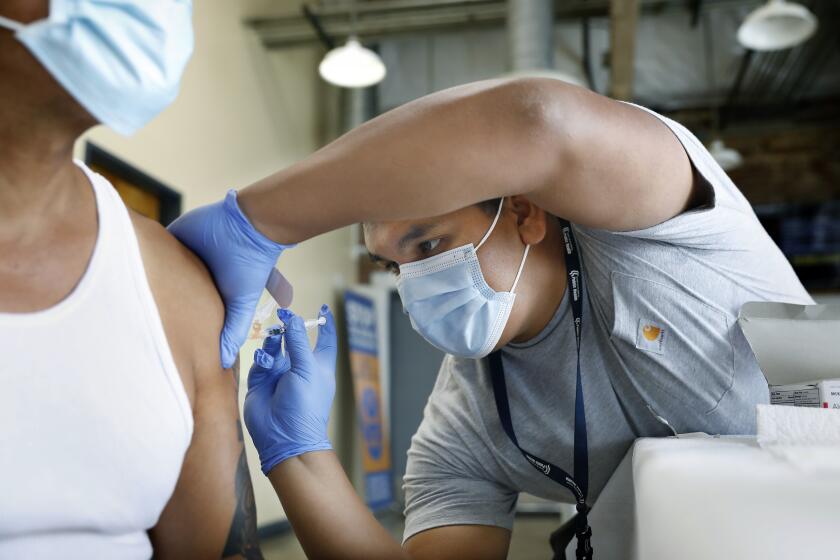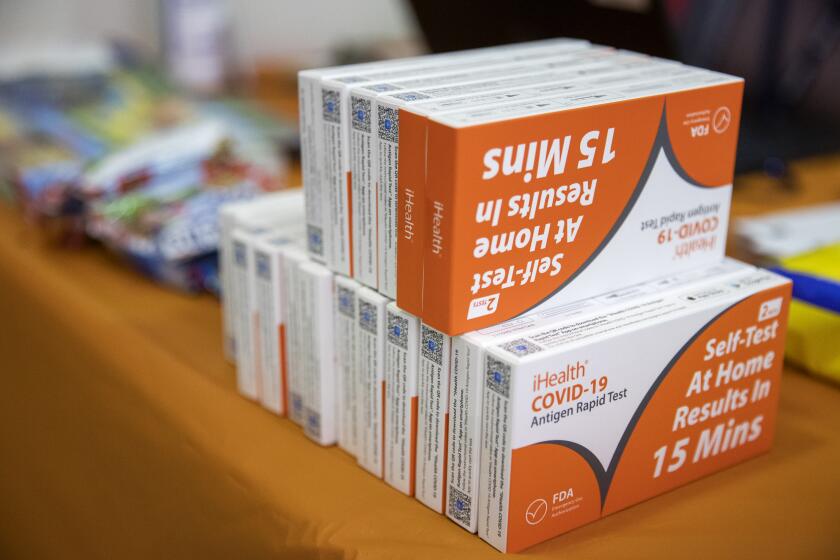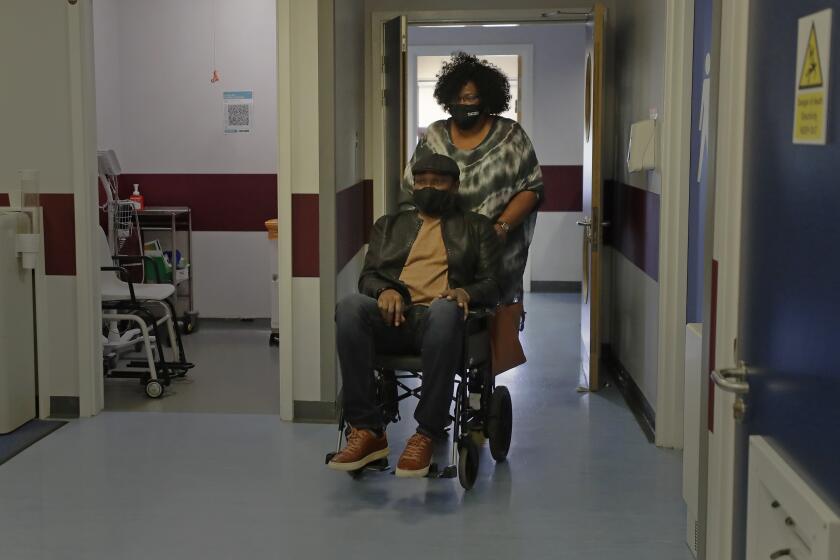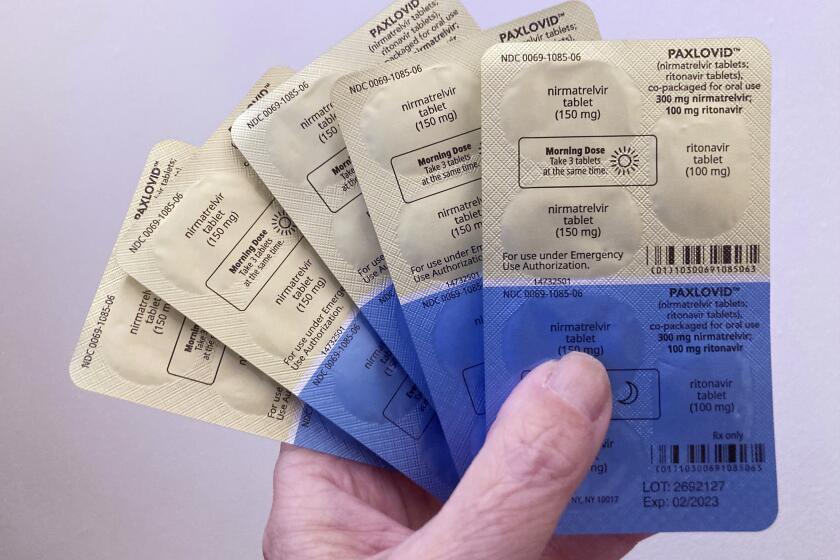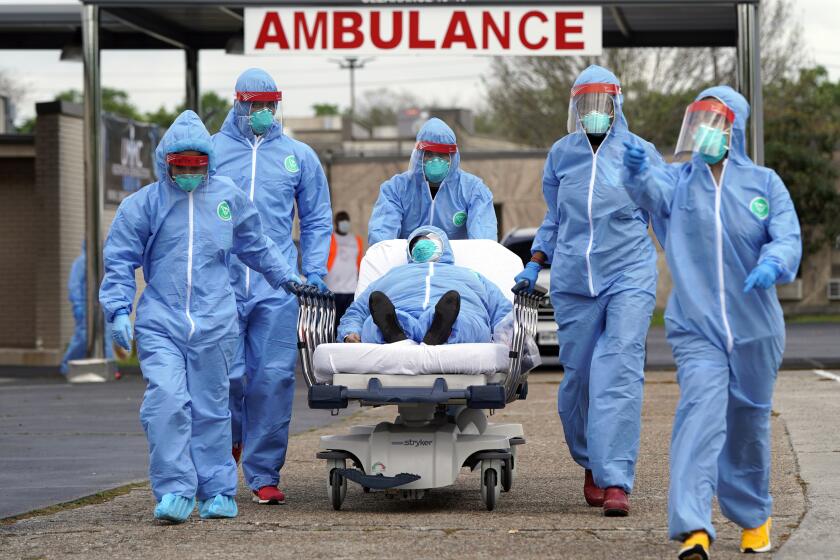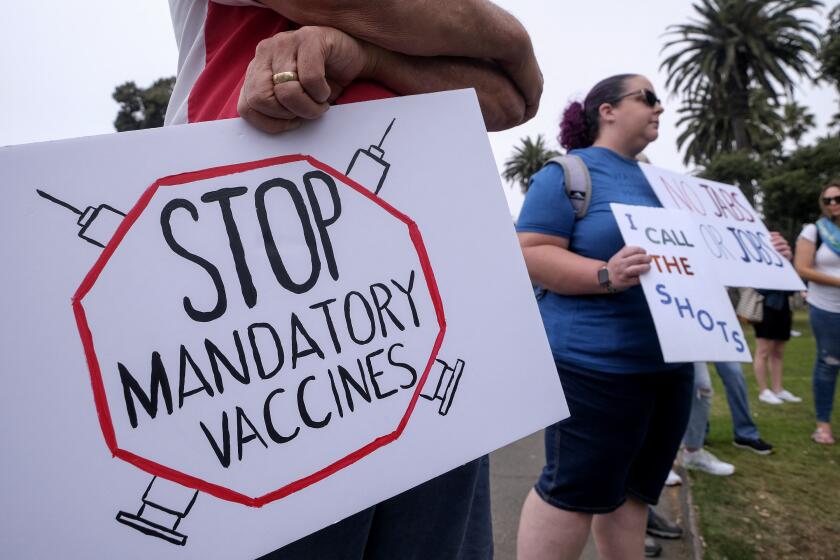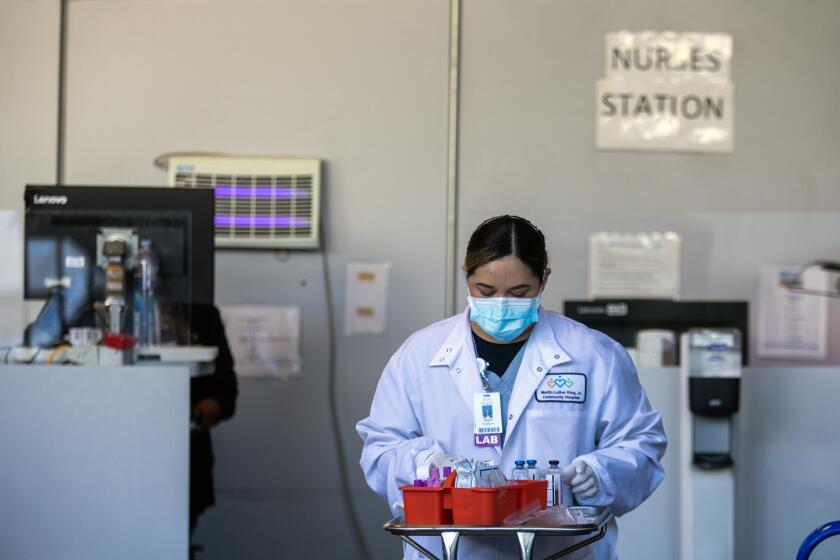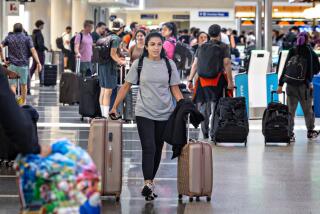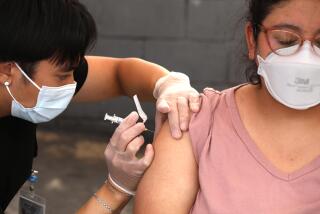COVID is still out there. Hereâs what to do if you get it now
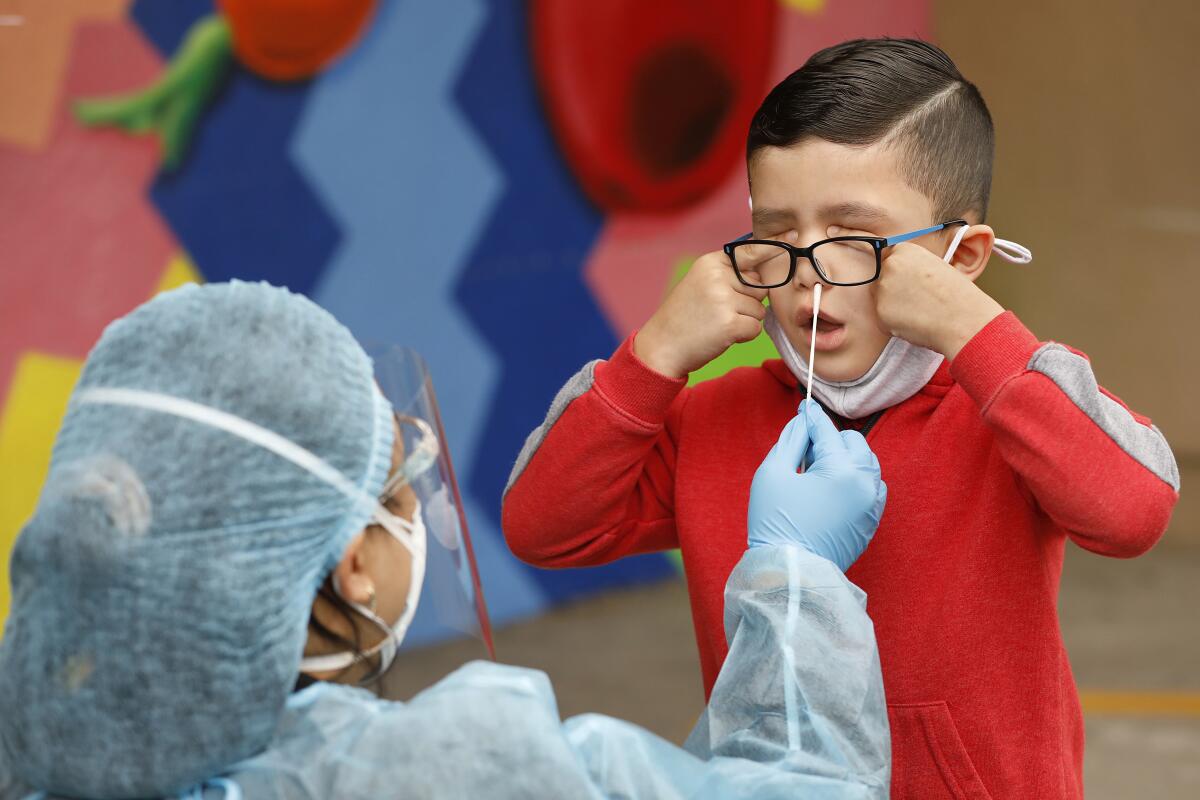
The government is ready to declare COVID-19 over: The nationwide state of emergency is set to end on May 11. In California, the state of emergency concluded in February. Johns Hopkins University shut down its nationwide COVID-19 data tracking this month.
But COVID-19 isnât gone. Though cases and deaths are on a downswing, plenty of people are still testing positive, especially as mask usage dwindles and pandemic restrictions end. Hundreds of people still die of COVID worldwide every day, according to the World Health Organization.
âItâs really hard to not catch Omicron,â said Paula Cannon, a virology professor at the USC Keck School of Medicine. âItâs so freaking infectious, even if youâve been boosted and vaccinated.â
After three years and what feels like a thousand public health proclamations about testing and isolating, you might find yourself falling down a frantic Google hole after that second line shows up on an at-home test.
Here are the latest protocols for what you should do if you test positive for COVID in 2023.
In order to move through a world where the coronavirus is endemic, we need a reliable way to assess our individual level of immunity. Hereâs how we can.
How long after exposure do you develop COVID symptoms?
If youâve been exposed to COVID, symptoms of infection can show up two to 14 days later, according to a 2020 survey of reported cases. Most infected people began showing symptoms three to six days after exposure; the median length of time between exposure and infection was five days. Of course, you wonât necessarily know if or when youâve been exposed.
Back in 2020, one hallmark of COVID was a sudden loss of taste and smell. But now, âanything going on in your head, nose or throat, you should absolutely suspect COVID,â Cannon said. Sniffles, fatigue, cough, sore throat, fever, stuffy nose, muscle aches â they could all point to COVID, though they could also be signs of any of the plethora of respiratory illnesses floating around in this tripledemic winter.
Loss of taste is a lot less prevalent now but could still be a symptom, said Muntu Davis, health officer for the L.A. County Department of Public Health. In a more severe case, he said, symptoms could include shortness of breath, racing heart, nausea, vomiting and diarrhea.
When should you take a COVID test?
If youâve done something during which you could have been exposed to COVID â such as traveled by plane or gone maskless in a large crowd â itâs a good idea to test after a few days even if you donât have any symptoms, Cannon said. Over Christmas, she traveled to England and celebrated her birthday at a large family gathering. After returning home, she took a test as a precaution. She got a positive result â her first time catching COVID in three years of the pandemic.
âI had absolutely no symptoms and would not have learned I had COVID apart from having taken the test,â she said. âPeople should also be aware that no symptoms is also a symptom of COVID.â
Home antigen tests are widely available and can reliably determine if you have a significant enough viral load to be contagious. You do not need to take a follow-up PCR test if youâve had a positive result on a home test.
You arenât required to report your result to the county or anywhere else, Davis said, though he did recommend letting your healthcare provider know.
At-home testing is widespread these days. But chances are the results arenât making their way into the public health system.
The new isolation guidelines for COVID
The most recent recommendation from the U.S. Centers for Disease Control and Prevention is to isolate for five full days after symptoms begin. That means the first day you start to feel sick is Day Zero; your five-day countdown begins the next day. If you tested positive but are asymptomatic, the recommendation is to isolate for five full days after the positive test.
Those first five days represent the period during which you are the most infectious, said Georges Benjamin, the executive director of the American Public Health Assn.
âCertainly the first five days, you should definitely isolate,â he said.
But thatâs the minimum, not the maximum. Getting to Day Six doesnât mean you can abandon all precautions. Thatâs the first day you can evaluate how youâre feeling to determine if you need to continue isolation: Are your symptoms improving? Have you been fever-free for at least 24 hours without using an over-the-counter fever-reducing medicine (acetaminophen or ibuprofen)?
If you are feeling better and are fever-free without medication, you can end your isolation, Davis said. If not, you need to continue, for up to 10 days.
While you are isolating, you should stay home and limit contact with anyone whoâs not infected, both inside your home and out. If you need to leave your house for a necessary reason â for instance, to pick up a medication or grocery delivery from your lobby â Benjamin said you should wear a tight-fitting N95 mask.
Mild cases of COVID-19 can cause patients to suffer long COVID symptoms, and a new study finds that some of those symptoms can linger for more than a year.
How long do COVID symptoms last?
The length of your symptoms will depend on a lot of factors, including whether youâre up to date on vaccinations and boosters and whether you take Paxlovid (more on that in a moment). Some people will feel better after a few days and some people will still have symptoms after 10 days, possibly even weeks later.
Beyond taking Paxlovid, there isnât much you can actively do to make COVID symptoms go away. Do what youâd normally do when youâre sick: Rest; drink lots of fluids; eat healthy meals; take acetaminophen to control aches and fever. In other words, take good care of yourself.
If you start to experience severe symptoms, even if youâre fully vaccinated and boosted, you should go to the hospital, Davis said.
âDefinitely [go] if youâre having a hard time breathing, catching your breath, if youâre really really really really super fatigued and not able to do much,â he said. He also said chest pressure or pain, confusion, trouble waking up or staying awake, and bluish or pale gray lips and nails are signs you need to see a doctor right away.
Who should get Paxlovid, and how do you get it?
Paxlovid is an antiviral treatment for COVID-19. There is a broad evidence-based scientific consensus that using it reduces the risk of being hospitalized or dying. Paxlovid may also reduce the chance of developing long COVID in some patients, Benjamin said.
Paxlovid is a five-day course of medication taken twice daily. Treatment has to begin within five days of developing COVID symptoms. Paxlovid may have negative interactions with certain prescription drugs, including statins and some heart and blood pressure medications. Some people who take Paxlovid report noticing an unpleasant metallic taste in their mouths â so-called Paxlovid mouth â which typically goes away after youâre done using the medication.
Right now, Paxlovid is prescribed in the U.S. only to people who have certain risk factors that increase the chances of a dangerous outcome from a COVID-19 infection. Itâs a wide range of conditions and behaviors, including being older than 50, being unvaccinated or not up to date on your booster shots, and health conditions including diabetes, heart conditions, a body mass index classified as obese, pregnancy or recent pregnancy, smoking, physical inactivity, and mental health conditions including depression.
That list of conditions continues to expand, Benjamin said, and even for young, healthy people, âsome would say [Paxlovid is] unnecessary, but I would say call your physician and follow their advice.â
If you donât have a regular physician, or if they canât see you quickly when you get sick, try a telehealth provider, Cannon said. She said she was on a video call with a âdoc in a boxâ from a telehealth app within an hour of testing positive.
Cannon said she thinks restricting who qualifies for Paxlovid right now is a mistake and that the drug should be more widely available. Beyond the listed eligibility conditions for Paxlovid, she said, âbeing at risk can be a judgment call by your doctor. Especially if you donât feel good, if you believe that you respond badly to respiratory infections,â itâs worth talking to a medical professional and asking about a prescription.
What some people term a âPaxlovid reboundâ â in which they have COVID, take Paxlovid, test negative, then test positive again days or weeks later â is really a COVID rebound, Cannon said. The treatment is effective enough that you reduce your viral load so that an infection doesnât show up on a test; then after treatment ends, your viral load increases again. That isnât Paxlovidâs fault, or a sign it didnât work, she said: âItâs a natural rhythm of the infection.â
Americans have embraced the idea that Paxlovid is to blame for COVID-19 relapses in people whoâve seemingly recovered. Scientists arenât so sure.
How long are you contagious with COVID?
Right now, Benjamin said, evidence suggests you are definitely contagious for that first five days after you start to develop symptoms or get a positive test result. In those first five days, itâs important to stay home and isolate as much as possible.
Beyond that, you should assume you are still infectious as long as you are getting a positive result on a home test. (PCR tests are more sensitive than antigen tests, so a PCR test may return a positive result even after you test negative on a home test.) Thatâs what Cannon did when she had asymptomatic COVID.
âI used the crude estimate of the little COVID test,â Cannon said. âIf thereâs enough virus in my nose to turn the test positive, then I know Iâve still got virus and Iâm potentially infectious. Once that test goes negative, I would feel very comfortable saying somebody is not infectious.â
If youâve reached the five-day threshold and youâre feeling better and are fever-free without medication, itâs generally considered safe for you to go out. Benjamin said you are still theoretically infectious up to day 10, though much less so, so you should exercise caution around people who could become severely ill.
âIf youâre going around someone who is immunocompromised, if youâre going to go see Grandma, I would still not do that within 10 daysâ of a positive test, he said.
Beyond that, he said, âyou can assume youâre not infectious. The risk is very low that youâre infectious [at that point]. Nothingâs 100%. But thatâs pretty good.â
On the third anniversary of the COVID-19 pandemic, most people have resumed their normal lives thanks to a wall of immunity built from infections and vaccines.
Is there any way to avoid or prevent long COVID?
Benjamin said the scientific world is only in the early stages of determining what constitutes long COVID, whoâs the most at risk, and looking into possible preventive measures.
A study recently published in JAMA Internal Medicine suggested an overall healthy lifestyle â adequate nutrition and sleep, regular exercise, moderate alcohol consumption â could lower womenâs risk of developing long COVID. Another study, published in Cell, identified four risk factors for long COVID, including Type 2 diabetes.
Americans who still arenât fully vaccinated against COVID-19 probably have some immunity from a past infection. They may not be so dangerous anymore.
How long are you immune after recovering from COVID?
We donât have a solid answer to this question yet either. Davis, the L.A. County health officer, said the guidance used to be that you were considered immune and shouldnât have to test again within 90 days after you had an infection; now, he said, itâs 30 days. But thatâs just a guideline, not a definitive scientific consensus.
A recent, widely reported meta-analysis published in the Lancet showed many people have antibodies in their blood 10 months after an infection. But the presence of antibodies doesnât mean youâre guaranteed to not develop a symptomatic infection â it means your odds are lower. And reinfection protection was shown to be âsubstantially lowerâ for omicron variants, which have been the dominant strains in the United States for over a year.
A CDC study of seroprevalence â testing for the presence of antibodies in peopleâs blood â showed that as of May 2022, almost 95% of Americans had either had COVID, gotten vaccinated for COVID, or both. At this point, itâs unlikely we will ever reach a point where herd immunity will wipe out COVID entirely. Some scientists are working on tests that look at T-cell immunity, instead of antibody levels, to assess whether someone is immune. For now, itâs impossible to say how long you can stop worrying about getting COVID after recovering from it.
Among the changes announced by the California Department of Public Health will be the end of the statewide mask mandate in healthcare and other indoor high-risk settings â including correctional facilities and homeless shelters â beginning April 3.
